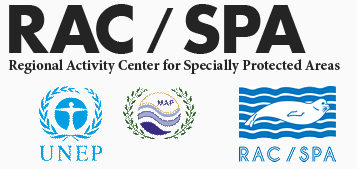Decision to submit for COP21 from SPA/RAC
In relation to marine biodiversity and protected areas, the COP 21 is expected to adopt decisions for the review and adjustment of regional strategies, and the setting-up of initiatives to promote cooperation towards the sustainable management and use of marine resources, including:
• The development of a new Strategic Action Programme for the conservation of Biological diversity in the Mediterranean region (SAP BIO) as well as a new roadmap to strengthen the network of marine protected areas in the Mediterranean, in line with the CBD Post-2020 Global Biodiversity Framework.
• The setting-up of a multidisciplinary think tank that can provide advice and timely orientations on MPA planning and management in the Mediterranean;
• The establishment of a Directory of Mediterranean Specially Protected Areas, for a better visibility and monitoring of MPAs established in the framework of the Barcelona Convention.;
• The inclusion of 4 new areas, namely Cerbère-Banyuls Marine Nature Reserve (France), the Egadi Islands Marine Protected Area (Italy), the Landscape Park Strunjan (Slovenia) and the Cetaceans Migration Corridor in the Mediterranean (Spain), in the List of Specially Protected Areas of Mediterranean Importance. The SPAMI List was created, in 2001, to promote regional cooperation in the management and conservation of natural areas, as well as in the protection of threatened species and their habitats. Presently, the SPAMI List includes 35 sites proposed by 10 countries;
• The drafting of the concepts in order to set up the SPAMI Day and the Mediterranean Diploma for Specially Protected Areas of Mediterranean Importance and submit them for consideration by the Contracting Parties at their COP 22;
• The adoption of the updated strategy for the conservation of monk seal and the action plans for the conservation of cartilaginous fishes, marine turtles and vegetation in the Mediterranean, which include monitoring sections in line with the Ecosystem Approach principles and the Integrated Monitoring and Assessment Programme (IMAP) of the Barcelona Convention;
• The adoption Draft updated classification of benthic and marine habitat types for the Mediterranean region and the Draft Updated Reference List of Marine Habitat Types for the Selection of Sites to be included in the National Inventories of Natural Sites of Conservation Interest in the Mediterranean. The updated Classification and Reference List are more comprehensive, particularly as regards coralligenous and deep-sea habitats, and are aligned with the habitats classification of EUNIS, the European Nature Information System. This will enable a coherent use of the Reference list as much for national inventories as for monitoring programmes, and an adequate assessment of marine biodiversity in the Mediterranean in the framework of the IMAP.

